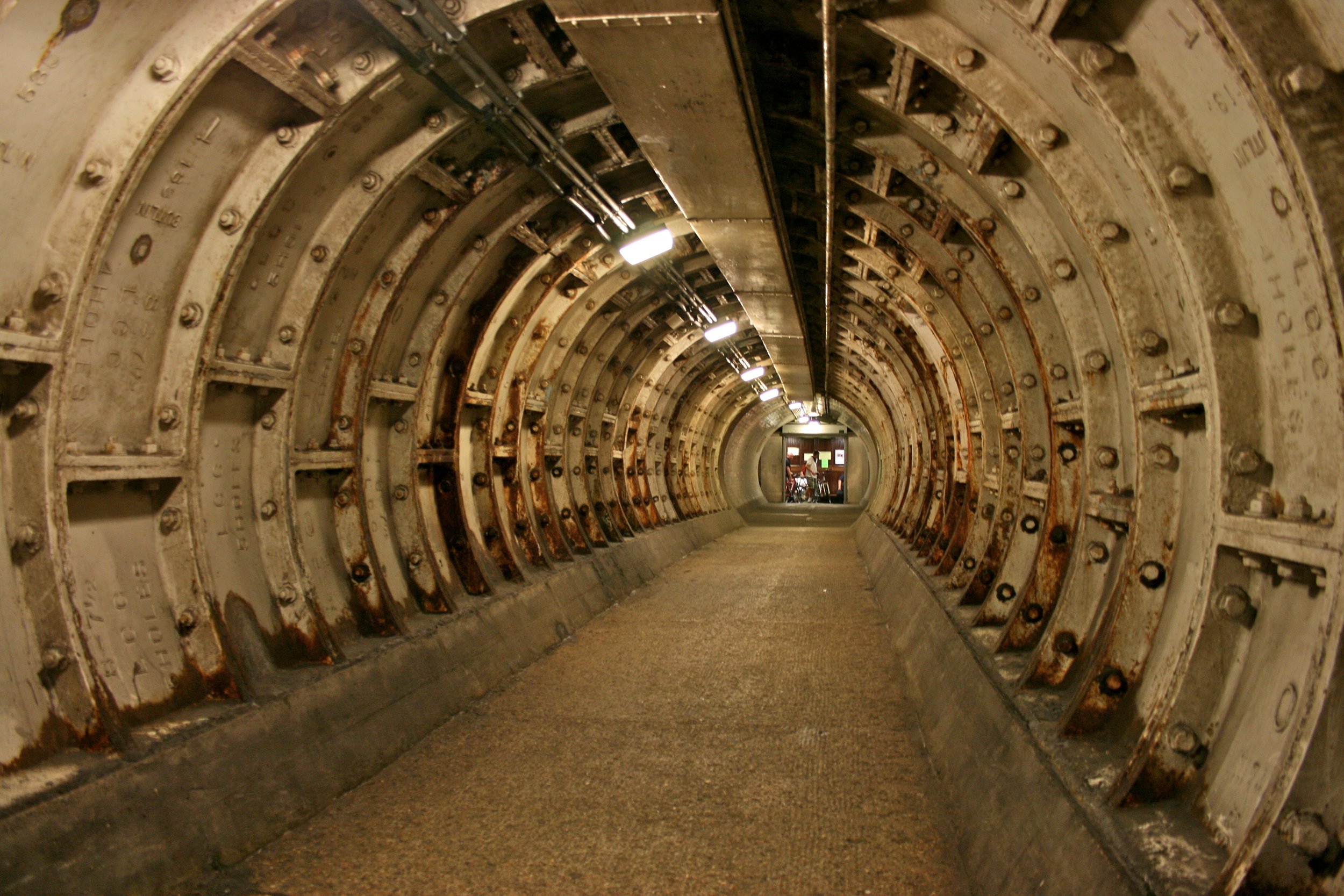Approximately 1.5 million people use the Greenwich & Woolwich Foot Tunnels to get from one side of the mighty River Thames to the other. They are, however, somewhat taken for granted. Have you ever stopped to wonder at their existence? They are quite remarkable - there's not much else quite like them in London, let alone the UK. At a time when we're going through an arduous process of trying to work out what London's next crossing will be - thankfully it seems the wonderfully impractical Garden Bridge won't be it - we should take a moment to appreciate how curious and marvellous these two crossings are. Anyway, we had long discussions as to whether the Greenwich & Woolwich Foot Tunnels could be classed as landmarks of South London, considering they largely run underneath the River Thames, all the way to the land beyond the sea (also known as North London.) The debate was swung by the fact that they are known as the Greenwich & Woolwich Foot Tunnels, and thus can be classed as landmark of those areas, which are parts of South London. Case closed. No, you can't appeal the decision, stop asking, we won't tell you again. Without further ado, here is a brief history of the Greenwich & Woolwich Foot Tunnels.
Greenwich Foot Tunnel
The Greenwich Foot Tunnel was designed by Sir Alexander Binnie, known as Al to his mates, who also designed the first Blackwall Tunnel and Vauxhall Bridge, and connects Greenwich with Island Gardens on the Isle of Dogs. The Woolwich Foot Tunnel was designed the absolutely amazingly-named Sir Maurice Fitzmaurice, who also designed the Rotherhithe Tunnel, and connects Woolwich with North Woolwich (an area we didn't know existed until very recently). The Greenwich Tunnel was opened in 1902, while the Woolwich Tunnel was opened ten years later in 1912. The role of both tunnels was to provide easy access to the docks north of the river, for dockworkers who lived south of the river. While the Greenwich Foot Tunnel replaced an unreliable ferry service, the Woolwich Foot Tunnel was created to operate alongside the Woolwich Ferry.
Woolwich Foot Tunnel
The Greenwich Foot Tunnel is 1, 217 feet in length, and about 50 feet deep, while the Woolwich Foot Tunnel is 1, 655 feet in length and 69 feet deep. The existence of both tunnels was largely down to the work of one Will Crooks, a Labour politicians who chaired the London County Council Bridges Committee - what they might have thought of Joanna Lumley and Boris Johnson's vanity project the Garden Bridge, we can only imagine. He campaigned for the crossings as dockworkers living on the south side frequently encountered difficulties when crossing the river by ferry, due to fog. Though shorter than the Woolwich Foot Tunnel, the Greenwich Foot Tunnel cost more at £127,000 (about £15 million today), which included £30,000 compensation to the London watermen (about £3 million), who had lost their livelihoods. The Woolwich Foot Tunnel cost £84,000 to complete.
The digging of both tunnels was achieved through the use of a tunnelling shield, however the excavation was done entirely by hand. The tunnelers worked day and night in eight hour shifts, managing to dig about 10 feet every 24 hours. The Greenwich Foot Tunnel was initially only accessible via the winding staircase, but lifts were added in 1904, while lifts were included in the entrances of the Woolwich Foot Tunnel from the outset in 1912.
While the entrances to the Woolwich Foot Tunnel are brick affairs, the entrances to the Greenwich Foot Tunnel are remarkable for their large glazed domes, however all are Grade-II listed buildings. During the Second World War, the north end of the Greenwich Foot Tunnel suffered bomb damage and had to be repaired, explaining the change in design when one reaches the north end (pictured below).
In recent years, both tunnels have undergone a extensive refurbishment to ensure they remain safe to use - a sensible thing to do when one considers they are both over 100 years old. This process, however, has not been without issue. Having begun work on both tunnels by 2009 the aim had been to finish the work by 2011, in time for the 2012 Olympics, and though the Greenwich entrances were reopened in 2011, it was clear that much was unfinished at Woolwich. After an inquiry by the Royal Borough Of Greenwich admitted that the work had not been finished, the Greater London Authority stepped in and the Friends of Greenwich & Woolwich Foot Tunnels (FOGWOFT) was established in 2013. Working alongside the contractors, FOGWOFT took on the role of public consultation and ensure proper care was taken. An example of this was the replacement of the glass tiles in the entrances of the Greenwich Tunnel. Though the murky transparency of the tiles was now familiar with those who used the Tunnel, it had never been intentional, and was a result of staining caused by dirt. In response, English Heritage agreed that the replacement tiles would have a feint white smoke tint in order to achieve the same effect.
Though they are to some extent curiosities, there is little to dislike about the Foot Tunnels. They were designed to serve a practical purpose and they have always been free to use. We've already mentioned the Garden Bridge, and according to Joanna Lumley (national treasure) "the silent majority still love the bridge, but of course they were not asked what they think". Unlike the Garden Bridge, the Foot Tunnels haven't needed to desperately search for massive financial backers to keep them open, or even to have made them happen - they were opened, and have been kept open because they made sense. The Foot Tunnels remain open because they are well-loved, and they are well-loved because they served, and still serve, an important purpose, and will likely do so for many years to come.
what is the south london club card?
The South London Club is a local discount card to help support small independent businesses across South London whilst saving all who live, work & play in South London money! With over 500+ local discounts to choose from, you will discover & explore all the best hidden gems in South London. Join over 4,000 of us & celebrate all that's independent in South London!








